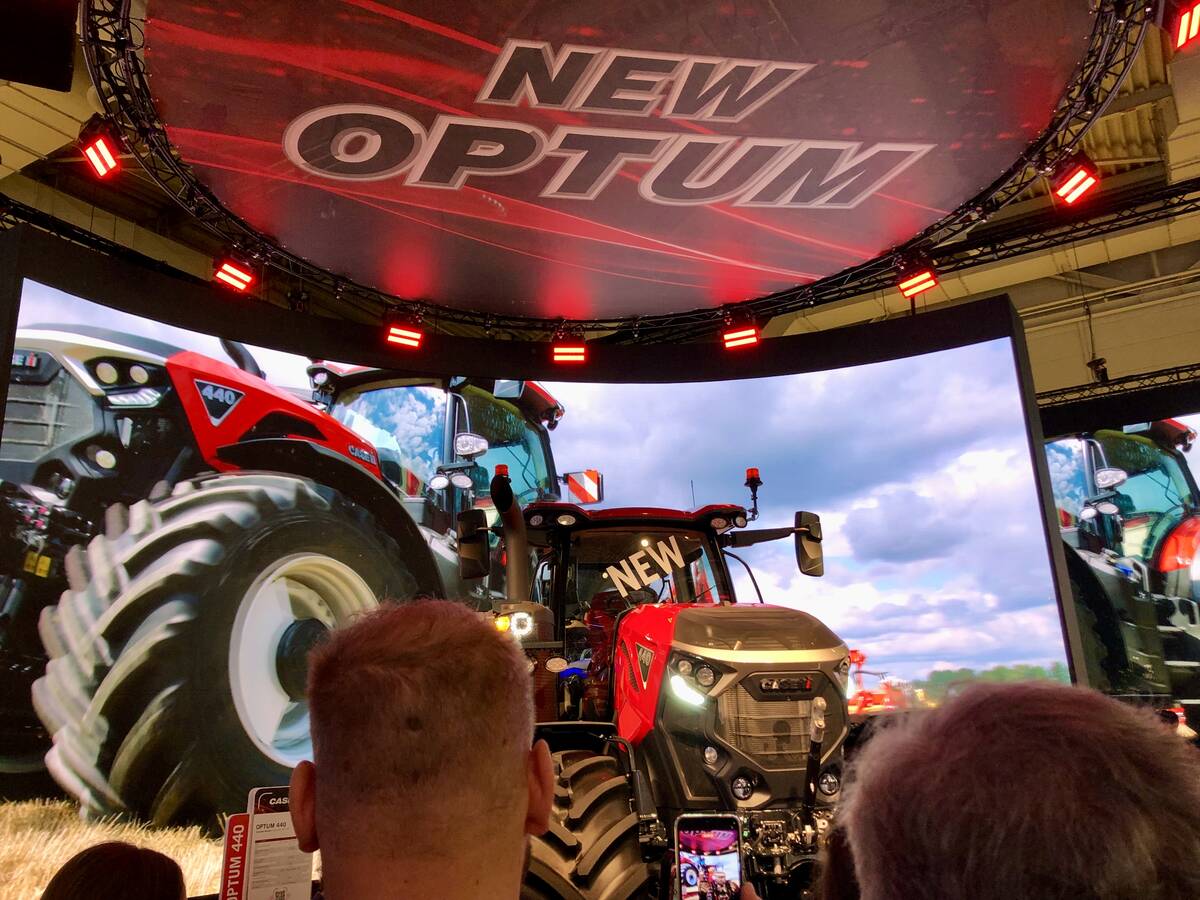Bruce Bertram, who in 1982 invented the Ram power snare that he manufactures in Birtle, Man., said sales of trapping supplies have been booming lately.
“There’s a lot of recreational trapping now that was never very big before,” he said. “Business lately has been really good.”
Another reason for greater interest in trapping is the exploding varmint population, which has motivated farmers and ranchers to start their own trap lines. Ever since fur prices plunged in the early 1990s, the number of skunks, foxes, coyotes and beavers has risen dramatically.
Read Also

VIDEO: Case IH reveals new Optum tractor at Agritechnica 2025
Case IH reveals its new Optum tractor at Agritechnica 2025.
“Guys who raise sheep, and even cattle and horses, in some areas have a real problem,” he said.
With fur prices on the rise again due to interest from emerging markets in cold countries such as Eastern Europe, China and Russia, part-time trappers have even more reason to take up the pastime.
Dave Bewick, vice-president of Canadian wild fur operations for North American Fur Auctions, said prices jumped for the first time in 15 years at a sale held in February 2006.
It found good demand for beaver, with top quality pelts fetching more than $50 each, and muskrat, which for the first time in years averaged in the $8-$10 range.
Although fur prices may fluctuate wildly, Bewick said expectations are that this year’s sales will offer equal or better returns for most species. Good coyote pelts from Alberta and Saskatchewan should bring $45-$50 or more, he said.
Sales of Bertram’s invention, which consists of a cable snare that is pulled tight by a long tempered steel spring, were initially slow when it first hit the market in the mid-1980s. Although the use of common snares has been banned in Manitoba outside of northern registered trap lines since the early 1970s, it took a lot of convincing to get trappers to try out the new quick-kill device. Getting governments to approve it wasn’t easy, either.
“It was an uphill battle, province by province. We’ve sold 80,000 of the Rams, but it hasn’t been a get-rich-quick scheme.”
Bertram was inspired to create his snare after becoming frustrated with other cumbersome mechanical snare devices.
“I came up with this new idea that was totally different from everything else. It worked, and my sales reflect it. It’s not a Wal-Mart-type market, it’s more of a recession-proof niche,” he said. “Now, we’re exporting a lot to the U.S.”
Ordinarily, his company employs three people in the manufacturing shop, but lately he added two more workers. “And we’re just keeping up,” he said.
His company markets its product line, which includes common snares, all the way to the Arctic Circle, as well as through six major distributors in the United States.
Demand from the nuisance animal control segment has kept the business humming along, even at times when it seemed the bottom had dropped out of fur prices.
“I’ve met trappers who have completely gone into animal control. One beaver colony in the middle of urban sprawl can cause a lot of problems, like cutting down all their ornamental trees,” he said. “Now, that beaver is all of a sudden worth $500 dead.”
The Agreement on International Humane Trapping Standards signed by Russia, Canada and the European Union in 1997 phased out over a 10-year period the use of regular leghold traps for most fur-bearing animals. Also, as part of the agreement, novice trappers must take a two-day training course before they can buy a licence.
By June 2007, only traps that have been certified on a species-by-species basis under the agreement will be legal for use, said Dean Berezanski, with the Manitoba conservation department. Traps already approved include most types of body-gripping devices that kill the animals quickly, such as the Conibear and its clones, and the Ram power snares.
“However, we always tell trappers, ‘don’t throw away your old traps.’ For example, the old conventional steel-jawed leghold trap can still be used in drowning sets for muskrat. That has actually been certified,” he said.
Traps with modified jaws that minimize pain and damage to the animal’s foot are still allowed. Equipped with rubber, offset or thicker laminated jaws, the new traps are generally used in ground sets to catch canines, usually before the snow gets too deep.
By December, when the snow is deeper, most trappers switch to power snares which, because they are hung above the snow, are not as susceptible to freezing.














